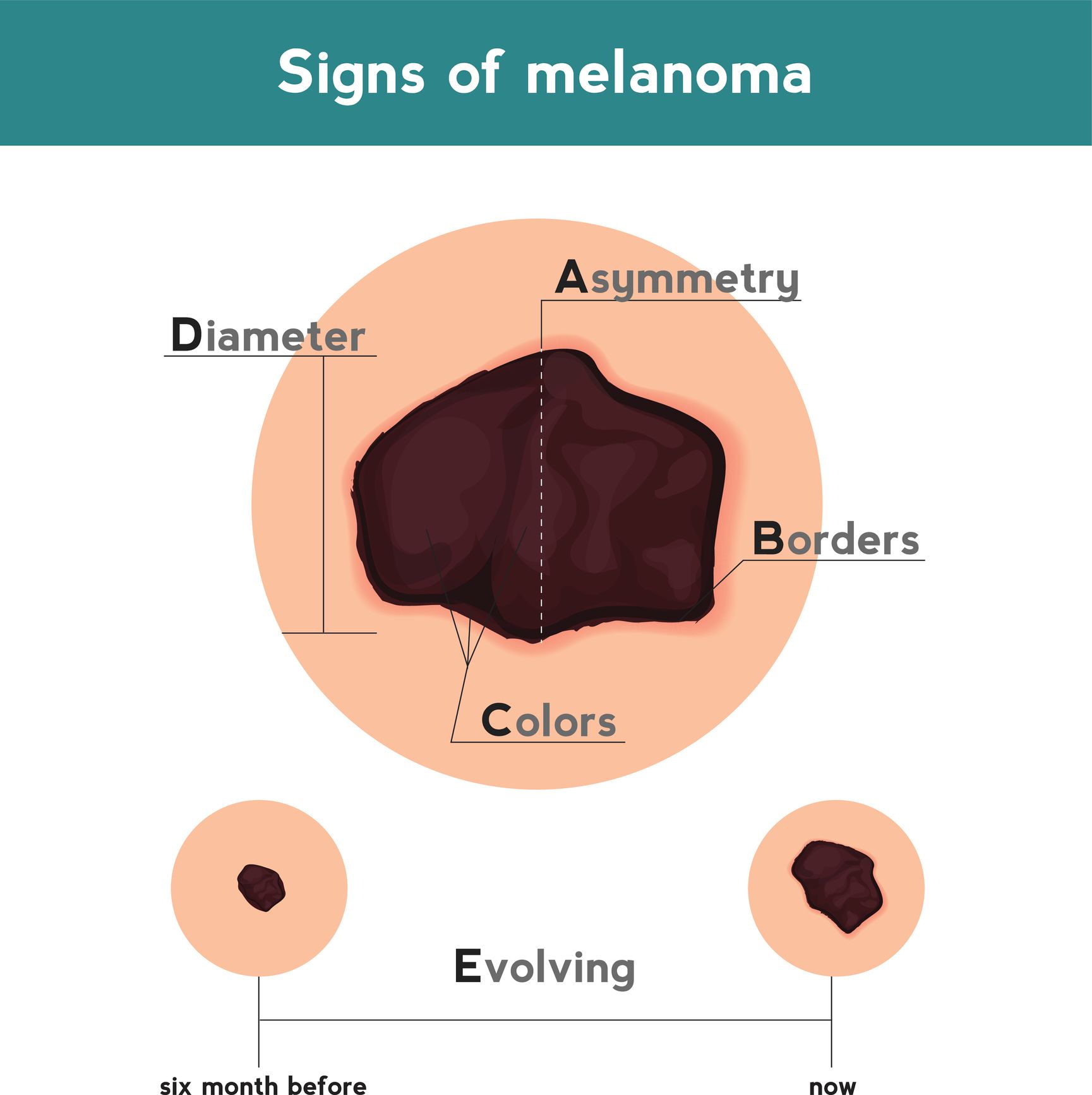What is Melanoma?
Melanoma is usually, but not always, a cancer of the skin. It begins in melanocytes – the cells that produce the pigment melanin that colors the skin, hair and eyes. Melanocytes also form moles, where melanoma often develops. Having moles can be a risk factor for melanoma, but it’s important to remember that most moles do not become melanoma.
ABCDE's of Melanoma
A
Asymmetry
Most melanomas are asymmetrical. If you draw a line through the middle of the lesion, the two halves don’t match, so it looks different from a round and symmetrical common mole.
B
Border
Melanoma borders tend to be uneven and may have scalloped or notched edges. Common moles, on the other hand, tend to have smoother, more even borders.
C
Color
Multiple or uneven colors are a warning sign. While common moles are usually a single shade of brown, a melanoma may have different shades of brown, tan or black. As it grows, the colors red, white or blue may also appear.
D
Diameter
It is definitely concerning if a lesion is the size of a pencil eraser (about 6mm in diameter) or larger.
E
Evolving
Any change in size, shape, color or elevation of a spot on your skin, or any bleeding, itching or crusting, may also be a warning sign of melanoma.
If you notice any of these warning signs, or anything new, changing, or unusual on your skin, make an appointment with your dermatologist as soon as possible.

There are three general categories of melanoma:
- Cutaneous Melanoma is melanoma of the skin. Since most pigment cells are found in the skin, cutaneous melanoma is the most common type of melanoma. Cutaneous melanoma can be described in four main ways:
- Superficial Spreading Melanoma
- Nodular Melanoma
- Acral Lentiginous Melanoma
- Lentigo Maligna Melanoma
- Mucosal Melanoma can occur in any mucous membrane of the body, including the nasal passages, the throat, the vagina, the anus, or in the mouth
- Ocular Melanoma, also known as uveal melanoma or choroidal melanoma, is a rare form of melanoma that occurs in the eye. Learn more about CURE Ocular Melanoma, the Melanoma Research Foundation’s initiative focused on ocular melanoma
Unlike other cancers, melanoma can often be seen on the skin, making it easier to detect in its early stages. If left undetected, however, melanoma can spread to distant sites or organs. Once melanoma has spread to other parts of the body (known as stage IV), it is referred to as metastatic melanoma, and is very difficult to treat. In its later stages, melanoma most commonly spreads to the liver, lungs, bones and brain; at this point, the prognosis is unfavorable.
What Causes Melanoma?
Research suggests that approximately 90% of melanoma cases can be linked to exposure to harmful ultraviolet (UV) radiation from natural or artificial sources, such as sunlight and indoor tanning beds. However, since melanoma can occur in melanocytes throughout the body, even those that are never exposed to the sun, UV light cannot be solely responsible for a diagnosis. This is especially notable when discussing mucosal and ocular melanoma cases. Current research points to a combination of family history, genetics and environmental factors that are also to blame. Taking steps to prevent melanoma is therefore the best first step in protecting yourself and your skin.
Risk Factors for Melanoma
Talk to family members and your doctor about whether you are at an increased risk and the steps you can take to prevent melanoma. To learn more about Risk Factors for Melanoma, Click here.










